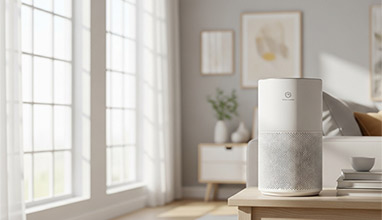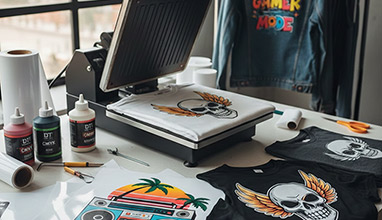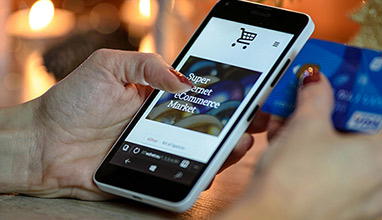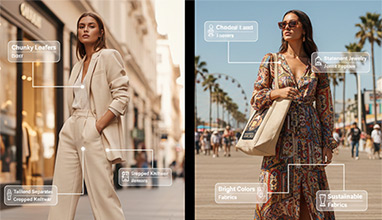Why Roll Labels Are a Smart Move for Small Businesses in 2025
More Than Just a Sticker: Why Roll Labels Matter
Think about this: a small coffee roaster in Bremen realized last year that packaging swallowed 14 percent of its annual budget—more than the coffee beans themselves. That’s not an isolated case. Packaging costs and new compliance requirements are squeezing small businesses everywhere in 2025.

Photo: Depositphotos
Roll labels, once seen as a tool for big manufacturers, are changing that picture. With short-run digital printing now mainstream, even a start-up can order small batches without paying hefty setup fees. The global market for digital label printing hit $3.4 billion this year and keeps growing, driven by on-demand flexibility and speed. So, what makes roll labels different from those sheet labels still tucked in desk drawers? Simple: they’re wound around a core and designed for easy application—whether by hand or machine. That means less waste, faster work, and better-looking products.
Roll Labels vs. Sheet Labels at a Glance
| Feature | Roll Labels |
Sheet Labels |
Space used for 5,000 labels |
About 0.06 m³ |
About 0.10 m³ |
Waste from changeovers |
Under 2 percent |
About 6 percent |
Application |
Dispensers or automated lines |
Mostly manual |
Minimum order |
250–500 labels |
~5,000 labels |
Cost per label at 2,000 units |
$0.06 |
$0.08 |
Let’s break down why small businesses are switching to rolls and how this change pays off in branding, cost control, compliance, and customer engagement.
Better Branding Without Breaking the Bank
Brand consistency matters—whether you sell coffee beans, candles, or craft beer. High-resolution digital printing (up to 1,200 dpi) now works on multiple materials: paper, polypropylene, even compostable films. Seasonal color changes? Limited-edition runs? They’re easy when you don’t need new plates for every tweak. Finishes like soft-touch laminate, holographic foil, and matte varnish are no longer reserved for companies placing 50,000-unit orders. A small cosmetics brand can create a textured label that feels premium without eating up its marketing budget.
Popular Label Materials in 2025
| Material | Common Use |
Sustainability Factor |
Cost Index* |
FSC paper |
Food jars, wine |
Renewable fibers |
1.0 |
White PP film |
Household goods |
Recyclable |
1.2 |
Recycled PET |
Beverages, cosmetics |
90 percent post-consumer resin |
1.3 |
PLA compostable film |
Organic food |
Breaks down in composting |
1.4 |
*Paper baseline = 1.0
Consistency also matters when products ship in mixed packaging—think beer cans and gift boxes. With color-calibrated printing, businesses keep their visual identity sharp across all formats.
Cost Savings You Can See
Digital roll labels eliminate plate fees and allow orders as small as a few hundred units. The result? Lower upfront costs and less waste. Rolls also take up roughly 40 percent less storage space than sheets, which means fewer shelves tied up with old designs.
Example: A Microbrewery’s Label Costs
| Volume | Sheet Labels |
Roll Labels |
Savings |
10,000 |
$800 |
$610 |
24 percent |
25,000 |
$1,850 |
$1,300 |
30 percent |
60,000 |
$3,960 |
$2,640 |
33 percent |
That savings doesn’t just show up on invoices—it improves cash flow, giving businesses flexibility for marketing or product development.
Faster Workflows, Happier Teams
Time is money, and anyone who has peeled stickers off sheets knows how slow that gets. Roll labels work with simple tabletop dispensers that cost less than $300. They feed a label every second—cutting application time by as much as 25 percent, based on recent trials with e-commerce companies in Austria. For growing businesses, automated applicators can push through 120 labels a minute, adding variable data like batch numbers on the fly. Integration with inventory systems means every scan updates stock levels automatically. That means fewer errors and fewer headaches.
Compliance Made Simpler
Rules are getting stricter. The European Union’s packaging regulations now require recyclability and clearer information for consumers. Roll labels make compliance less stressful because they let businesses add required icons, barcodes, and multilingual text without overhauling packaging. Eco-friendly options have improved too. Wash-off adhesives allow clean recycling, and recycled liners reduce waste. Small companies can now join take-back programs previously limited to large brands, thanks to lower minimum quantities.
Labels as Marketing Tools
A label isn’t just a product tag anymore—it’s a marketing channel. QR codes lead to recipes, how-to videos, or loyalty programs. Some brands add NFC chips for quick reorders or exclusive content. Consumers are used to scanning, and the numbers prove it: engagement with smart labels keeps climbing across food and personal care sectors. Personalization is another big plus. Want to print 300 jars with winners’ names? No problem. Digital runs make one-off designs affordable. This trend feeds into the rise of “unboxing moments” shared on social media, turning packaging into free advertising.
Scales as You Grow
Starting small? Roll labels let you upgrade easily. The same rolls that work on a handheld dispenser now will run on an automated applicator when demand spikes. Because the artwork files stay the same, you avoid costly redesigns. Global supply chains are unpredictable, but digital workflows help businesses respond fast. If one print site goes down, another can pick up the job without major delays. That resilience used to be an advantage only big companies had.
How to Get Started
Switching to roll labels is simpler than you might think. Start with a packaging audit: how many SKUs, how much waste, how long does labeling take? Set goals—cost reduction, regulatory compliance, better aesthetics—and share them with your print provider specialized on custom stickers and roll labels. Order a small test roll and run real-world trials: check adhesion in cold, heat, and transit. Train your team on dispensers or applicators. Finally, track metrics like defect rate and turnaround time. If results meet your targets, phase in roll labels across all SKUs.
Roll labels aren’t just a cost-saving measure. They’re a way for small businesses to stay competitive—offering premium looks, compliance, and smart marketing features without big-company budgets. With minimum orders dropping and material options expanding, the barrier to entry is lower than ever. For businesses that value flexibility and speed, switching to roll labels in 2025 is less about following a trend and more about making a smart, sustainable decision.
Hits: 4509 | Leave a comment
Tags:business, roll labels

















